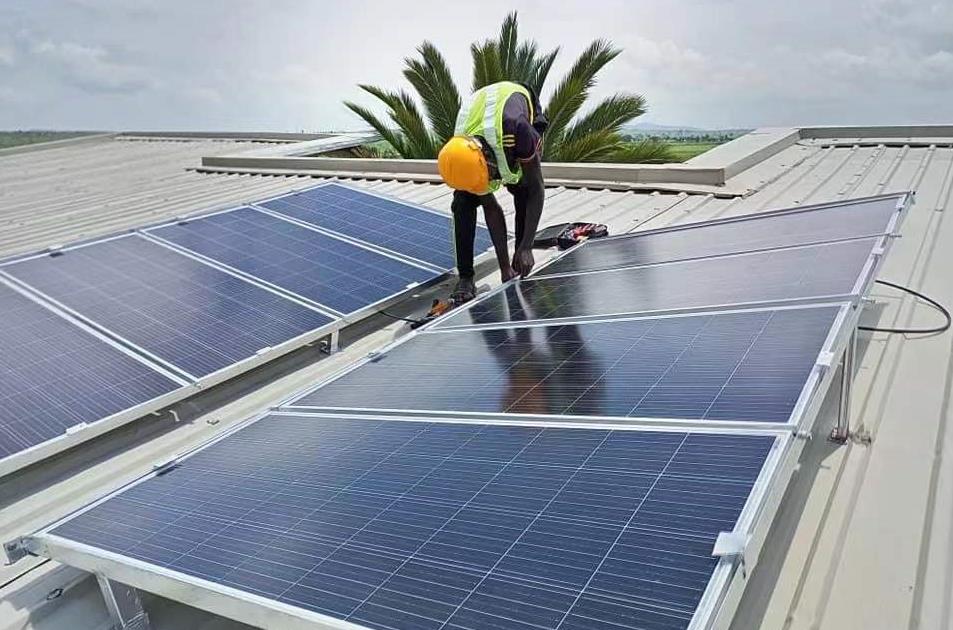Before the rise of the photovoltaic industry, inverter or inverter technology was mainly applied to industries such as rail transit and power supply. After the rise of the photovoltaic industry, the photovoltaic inverter has become the core equipment in the new energy power generation system, and is familiar to everyone. Especially in developed countries in Europe and the United States, due to the popular concept of energy saving and environmental protection, the photovoltaic market developed earlier, especially the rapid development of household photovoltaic systems. In many countries, household inverters have been used as household appliances, and the penetration rate is high.
The photovoltaic inverter converts the direct current generated by photovoltaic modules into alternating current and then feeds it into the grid. The performance and reliability of the inverter determine the power quality and power generation efficiency of power generation. Therefore, the photovoltaic inverter is at the core of the entire photovoltaic power generation system. status.
Among them, grid-connected inverters occupy a major market share in all categories, and it is also a beginning of the development of all inverter technologies. Compared with other types of inverters, grid-connected inverters are relatively simple in technology, focusing on photovoltaic input and grid output. Safe, reliable, efficient, and high-quality output power has become the focus of such inverters. technical indicators. In the technical conditions for grid-connected photovoltaic inverters formulated in different countries, the above points have become the common measurement points of the standard, of course, the details of the parameters are different. For grid-connected inverters, all technical requirements are centered on meeting the requirements of the grid for distributed generation systems, and more requirements come from the requirements of the grid for inverters, that is, top-down requirements. Such as voltage, frequency specifications, power quality requirements, safety, control requirements when fault occurs. And how to connect to the grid, what voltage level power grid to incorporate, etc., so the grid-connected inverter always needs to meet the requirements of the grid, it does not come from the internal requirements of the power generation system. And from a technical point of view, a very important point is that the grid-connected inverter is "grid-connected power generation", that is, it generates power when it meets the grid-connected conditions. into the energy management issues within the photovoltaic system, so it is simple. As simple as the business model of the electricity it generates. According to foreign statistics, more than 90% of the photovoltaic systems that have been constructed and operated are photovoltaic grid-connected systems, and grid-connected inverters are used.
A class of inverters opposite to grid-connected inverters is off-grid inverters. The off-grid inverter means that the output of the inverter is not connected to the grid, but is connected to the load, which directly drives the load to supply power. There are few applications of off-grid inverters, mainly in some remote areas, where the grid-connected conditions are not available, the grid-connected conditions are poor, or there is a need for self-generation and self-consumption, the off-grid system emphasizes “self-generation and self-use”. ". Due to the few applications of off-grid inverters, there is little research and development in technology. There are few international standards for the technical conditions of off-grid inverters, which leads to less and less research and development of such inverters, showing a trend of shrinking. However, the functions of off-grid inverters and the technology involved are not simple, especially in cooperation with energy storage batteries, the control and management of the entire system are more complicated than grid-connected inverters. It should be said that the system consisting of off-grid inverters, photovoltaic panels, batteries, loads and other equipment is already a simple micro-grid system. The only point is that the system is not connected to the grid.
In fact, off-grid inverters are a basis for the development of bidirectional inverters. Bidirectional inverters actually combine the technical characteristics of grid-connected inverters and off-grid inverters, and are used in local power supply networks or power generation systems. When used in parallel with the power grid. Although there are not many applications of this type at present, because this type of system is the prototype of the development of microgrid, it is in line with the infrastructure and commercial operation mode of distributed power generation in the future. and future localized microgrid applications. In fact, in some countries and markets where photovoltaics are developing rapidly and mature, the application of microgrids in households and small areas has begun to develop slowly. At the same time, the local government encourages the development of local power generation, storage and consumption networks with households as units, giving priority to new energy power generation for self-use, and the insufficient part from the power grid. Therefore, the bidirectional inverter needs to consider more control functions and energy management functions, such as battery charge and discharge control, grid-connected/off-grid operation strategies, and load-reliable power supply strategies. All in all, the bidirectional inverter will play more important control and management functions from the perspective of the whole system, instead of only considering the requirements of the grid or the load.
As one of the development directions of the power grid, the local power generation, distribution and power consumption network built with new energy power generation as the core will be one of the main development methods of the microgrid in the future. In this mode, the local microgrid will form an interactive relationship with the large grid, and the microgrid will no longer operate closely on the large grid, but will operate more independently, that is, in an island mode. In order to meet the safety of the region and give priority to reliable power consumption, the grid-connected operation mode is formed only when the local power is abundant or needs to be drawn from the external power grid. At present, due to the immature conditions of various technologies and policies, microgrids have not been applied on a large scale, and only a small number of demonstration projects are running, and most of these projects are connected to the grid. The microgrid inverter combines the technical features of the bidirectional inverter and plays an important grid management function. It is a typical integrated control and inverter integrated machine that integrates inverter, control and management. It undertakes local energy management, load control, battery management, inverter, protection and other functions. It will complete the management function of the entire microgrid together with the microgrid energy management system (MGEMS), and will be the core equipment for building a microgrid system. Compared with the first grid-connected inverter in the development of inverter technology, it has separated from the pure inverter function and carried the function of microgrid management and control, paying attention to and solving some problems from the system level. The energy storage inverter provides bidirectional inversion, current conversion, and battery charging and discharging. The microgrid management system manages the entire microgrid. Contactors A, B, and C are all controlled by the microgrid management system and can operate in isolated islands. Cut off non-critical loads according to the power supply from time to time to maintain the stability of the microgrid and the safe operation of important loads.
Post time: Feb-10-2022







